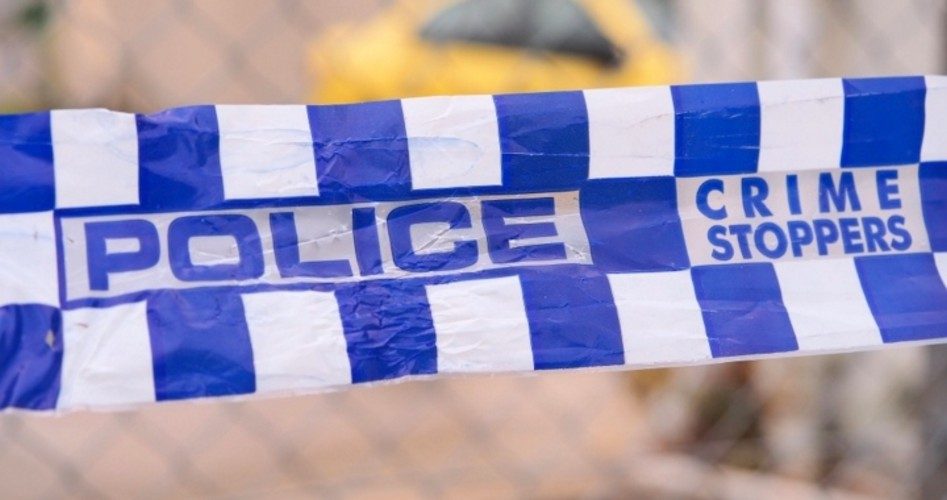
“Melbourne is in the grip of an unprecedented wave of gun violence.”
Thus begins a report published this week in the Australian newspaper The Age of a “three-day investigative series that should concern every citizen of a metropolis that has repeatedly won the accolade of “world’s most livable city.”
The situation is critical according to the article. “Gun-related crime has surged,” the writers declare desperately, and “innocent people have been killed.”
What do the authors of the series suggest as a solution to the crescendo of crime? “Concerted action” [must be] taken by those who make laws and those who enforce them.”
Then, the paper presents the facts and figures that detail the depravity into which their once peaceful city has descended:
The facts are chilling and compelling. In as little as five years, gun crimes have more than doubled. Some very dangerous people are involved; in 2015 alone, more than 750 people with serious criminal convictions were caught carrying guns. That’s up a staggering five times since 2011. Shootings have literally become a weekly event. Crimes related to firearm possession have more than doubled in the past five years. The number of young criminals has rocketed; almost 1500 people aged between 20 and 34 committed a gun offence [sic] last year, more than twice the number five years ago. A culture of carrying, and using, guns is becoming worryingly entrenched in criminal circles.
As for the particulars of The Age’s recommendations for restoring order, they are the typical trope of most progressive social activists: disarm the people. From the report:
“We believe there is a clear need to strengthen the law around guns,” they write, adding, that the state police should be granted “special new powers” that would “allow police to subject prohibited persons to warrantless searches and ban them from being in proximity to a gun.”
The paper then predicts that were government officials to follow its advice, peace and order would return to Melbourne and innocent people would be free from the threat of armed violence.
While this story is certainly sad and cautionary, it is more than that.
President Obama and Hillary Clinton praise Australia’s gun laws, promoting the imposition of a similar system in the United States.
Neither the president nor the Democratic presidential nominee who wishes to succeed him have ever been guilty of letting facts stand in the way of violating the Bill of Rights, so the full story from Down Under deserves a closer look.
In 1996, an Australian man named Martin Bryant killed 35 people and wounded 21 others during an armed rampage at a tourist site in Tasmania. Bryant used two semiautomatic weapons in the attack.
Australian gun laws were already extremely strict when Bryant committed the Port Arthur massacre. The laws in effect at the time required applicants asking for permission to buy a gun to provide a “genuine reason and need for owning, possessing or using a firearm.”
The list of government-approved “genuine reasons” included police and security work, hunting, controlling feral animals, collecting, and target shooting.
Noticeably missing from the Australian statute: personal protection. This omission brings up the question of whether the number of victims of the Bryant shooting spree might have been a bit lower had one of those caught in the crosshairs had a means to end the slaughter.
After the election of Prime Minister John Howard in March 1996, the Australian parliament passed the National Firearms Agreement (NFA) which banned all semiautomatic rifles, all semiautomatic shotguns, and all pump-action shotguns, and imposed severe limits on the possession of all other weapons.
As part of the systematic disarmament of Australians, the government initiated a forced buyback program aimed at eradicating private ownership of firearms.
Between October 1, 1996 and September 30, 1997, the Australian government paid over $230 million to “buy” (confiscate) and destroy more than 643,000 of the newly illegal weapons. Of particular interest to Americans would be the way the Australian government collected the money it spent buying back guns. To raise the funds necessary to purchase the guns targeted by the new law, Parliament raised the national healthcare tax by .2 percent.
The Age’s article praises the buy back, declaring that it is “high time” for another one.
Would it be beyond the pale of presidential madness to impose some new federal tax sufficient to secure the purchase of guns in our own country, a sort of 21st century “cash for clunkers” clone?
Finally, another section of the NFA provided for “rolling amnesties” for those gun owners who failed to surrender their weapons during the first phase of disarmament. During these announced amnesties, citizens can hand over guns that are either prohibited or not registered, without being charged with breaking the law.
That hardly sounds like a policy aimed at eradicating armed violence. That sounds more like a policy aimed at eradicating an armed civilian population.
Keeping in mind that should Hillary Clinton become president, she would model the forcible disarmament of Americans on the Australian model she finds so praiseworthy, it is important to analyze the effectiveness of the Australian effort.
Before examining the figures related to the Australian law, it is critically important that readers remember that the right to keep and bear arms is not dependent on the number of lives that can be saved by its eradication. There is no provision in the Second Amendment that provides for the infringement by the government on that right if there is a spate of killings by psychopaths.
That said, the following information is provided not to prove that disarmament would not reduce armed violence and therefore should not be attempted. The information is provided only to point out that even these “common sense” approaches to gun control are nonsensical and nothing more than despotism dressed in humanitarian robes.
In 2003, the Brookings Institution published a study of homicides in Australia after the passage of the National Firearms Agreement and the enforcement of its remarkably strict prohibitions on civilian gun ownership.
The Brookings study found that the “total homicide rate has been slowly declining throughout the 1990s.” And what about after the enforcement of the gun grab? “In the five years post-NFA there has been no pronounced acceleration of that decline,” the report concluded.
Speaking specifically of armed homicide, the study found that there was “a 3.2 percent decline in the daily rate of firearm homicide.” That reduction “continued a long-term trend rather than the effect of the Port Arthur incident.”
Also noteworthy, the Brookings study found that the number of homicides involving the “assault rifles” targeted by the NFA dropped, while the number of homicides involving handguns “did increase sharply after the NFA.”
So, as Melbourne plunges deeper into a dark night of criminal mayhem, their preference “to strengthen the law around guns” has already been shown to have no positive impact on crime and should such a suggestion be followed, the innocent the paper claims to want to protect would be left even more vulnerable to the vicious and violent among them who have demonstrated they will be bound by no law.



